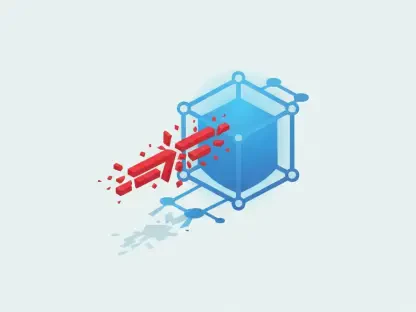Data mining has become an indispensable practice for organizations aiming to derive valuable insights from vast amounts of data, making informed decisions, and driving innovations. Open source data mining tools offer a cost-effective, flexible solution that enables users to tailor the software to their unique needs. This article delves into the leading open source tools that are essential for achieving effective and affordable data mining.
Understanding Open Source Data Mining Tools
Open source data mining tools are meticulously designed to extract new, meaningful data points from publicly accessible resources using an array of sophisticated methods. These tools excel in utilizing computational techniques to analyze web pages or various software and hardware components, generating insights valuable for making strategic decisions, predicting trends, or making accurate forecasts. What sets these tools apart is their freely available source code, which fosters a transparent, collaborative development model. This allows anyone to inspect, adapt, and share the software, promoting continuous improvement and refinement by the global community.
Key Features and Benefits
The significance of open source data mining tools extends across multiple sectors such as business intelligence, scientific research, and predictive modeling. These tools become even more powerful due to their open source nature, allowing countless users and developers around the world to participate in their development. The collaborative effort leads to the integration of innovative features, the rectification of bugs, and the addition of necessary modifications that benefit the wider community. This open ecosystem ensures that the tools remain cutting-edge and highly functional.
Cost-Effectiveness and Flexibility
One of the foremost advantages of open source data mining tools lies in their cost-free usage. Organizations can harness the power of advanced analytics without incurring significant expenses, making these tools ideal for cost-conscious entities. Besides being free, these tools are incredibly flexible, allowing users to tailor them according to specific organizational requirements. This flexibility ensures that the tools can meet a variety of needs, from small-scale projects to large, complex data analysis tasks, making them invaluable assets for any data-driven enterprise.
Top Open Source Data Mining Tools
WEKA
Background and Core Components
Developed by the University of Waikato in New Zealand, WEKA stands out as a comprehensive suite of machine learning algorithms designed for diverse tasks such as classification, regression, clustering, and association rule mining. The tool includes a user-friendly graphical user interface (GUI) that simplifies data visualization and analysis, making it accessible even for those with limited programming skills. WEKA’s robust data preprocessing tools are equipped to manage data transformation, attribute selection, and missing values, enhancing the quality and accuracy of the analysis. Its Java-based architecture ensures platform independence, facilitating seamless integration across various systems.
User-Friendly Interface and Visualization
WEKA’s intuitive GUI is one of its standout features, providing users with the ability to perform complex data analysis tasks without requiring extensive programming knowledge. The interface allows users to interact with the data through various visualization options such as scatter plots and histograms, which help in interpreting data patterns and insights effectively. These visualization tools not only make the analytical process more engaging but also ensure that users can identify trends and anomalies at a glance, enhancing overall data comprehension.
KNIME
Background and Core Components
Originating from the University of Konstanz in Germany, KNIME offers a highly visual workflow editor that leverages drag-and-drop operations, simplifying the creation and management of data analysis workflows. KNIME’s node-based modular data pipelining system allows for a structured approach to data analysis, from initial data input to final model deployment. Its extensibility is highlighted by the availability of thousands of plugins that cater to various needs, including text processing, image analysis, and machine learning. This extensive plugin ecosystem ensures that users can customize the tool to handle specific analytical tasks. KNIME’s integrated analytics capabilities support both classic statistical models and advanced AI techniques, providing a versatile solution for diverse analytical challenges.
Extensibility and Integration
KNIME’s extensibility through its plethora of plugins allows users to tailor the tool to their specific needs, making it adaptable to various project requirements. Whether dealing with simple data transformations or complex machine learning models, KNIME’s plugin support ensures that the necessary functionality is always at hand. Additionally, KNIME offers both a free open source version and an enterprise version with advanced features, ensuring scalability and suitability for both small-scale projects and extensive enterprise applications. This dual-version approach not only democratizes access to powerful data mining tools but also offers enhanced capabilities for organizations with more demanding analytical needs.
Orange
Background and Core Components
Developed by the University of Ljubljana in Slovenia, Orange is recognized for its visual programming interface, which allows users to design data workflows without the need for extensive coding. This intuitive interface, comprised of various widgets, facilitates a seamless data analysis process from initial data input to advanced predictive modeling. Orange’s interactive visualization tools, such as scatter plots, box plots, and tree viewers, enable users to engage with data more intuitively, uncovering hidden patterns and insights. The system of widgets, each tailored to specific analysis functions, ensures that users can easily build comprehensive data workflows, catering to a wide array of analytical requirements.
Interactive Visualizations and Extensibility
Orange’s strength lies in its interactive visualizations, which provide a more engaging and intuitive way to explore data. This approach not only makes the analysis process more accessible but also enhances the user’s ability to identify patterns, correlations, and outliers. Furthermore, Orange’s extensible framework with add-ons for specialized analysis tasks allows for customization to meet specific project needs. This ensures that as analytical requirements evolve, Orange can adapt and extend its capabilities, making it a versatile tool for both novice users and experienced data scientists.
RapidMiner
Background and Core Components
Originating from the Technical University of Dortmund in Germany, RapidMiner has evolved into a unified platform that integrates every stage of the data mining process, from data preparation to machine learning and model deployment. The platform’s visual workflow designer utilizes a drag-and-drop interface, simplifying the creation of complex analytical workflows. RapidMiner boasts an extensive library of prebuilt algorithms, covering a broad spectrum of analytics tasks. This comprehensive suite ensures that users have access to the right tools for any analytical challenge. The tool’s architecture supports scalability and integration, making it suitable for both individual analysts and large enterprise teams.
Scalability and Collaboration
One of RapidMiner’s standout features is its scalability, which allows it to handle large datasets and enterprise-level applications with ease. Its integration capabilities, which include support for cloud solutions, enhance its suitability for expansive data mining tasks. Additionally, RapidMiner offers collaborative features that facilitate data sharing, model collaboration, and result dissemination among team members. This fosters a collaborative environment that enhances teamwork and productivity, ensuring that insights derived from data mining efforts are effectively communicated and utilized within the organization.
Apache Mahout
Background and Core Components
Part of the Apache Software Foundation, Apache Mahout is renowned for its scalable machine learning algorithms, which are seamlessly integrated with Hadoop for processing large datasets. The tool covers a wide range of algorithms suited for clustering, classification, and collaborative filtering tasks. A notable feature of Mahout is its specialized linear algebra framework, Samsara, which ensures precise mathematical computations. This combination of scalable algorithms and mathematical accuracy makes Mahout an ideal choice for organizations handling massive data repositories and complex analytical challenges.
Modular Architecture and Speed
Apache Mahout’s modular architecture stands out for its flexibility, allowing for the easy incorporation of new algorithms as analytical needs evolve. This modularity ensures that Mahout can adapt to changing data mining requirements, providing a sustainable solution for long-term analytical projects. Furthermore, Mahout’s native support for Apache Spark significantly enhances its processing speed, making it capable of handling large-scale data mining tasks efficiently. This speed and scalability are crucial for organizations that require rapid analysis of extensive datasets, ensuring timely insights and informed decision-making.
Scikit-learn
Background and Core Components
Built for the Python programming language and developed by a global community, Scikit-learn is a powerful tool offering a wide array of supervised and unsupervised learning algorithms for diverse analytical tasks. The tool features a uniform interface with a consistent API, which simplifies its usage and integration into existing workflows. Scikit-learn includes tools for data preprocessing, normalization, and feature extraction, which are essential for preparing data before analysis. Additionally, it provides performance metrics for model evaluation and optimization, ensuring that the machine learning models are both accurate and efficient.
Integration with Python Ecosystem
Scikit-learn’s seamless integration with other Python libraries, such as NumPy, SciPy, and Matplotlib, enhances its functionality and makes it a favorite among data scientists and analysts. This integration allows users to leverage the full power of the Python ecosystem, combining various tools for a comprehensive data analysis solution. Scikit-learn’s simplicity and ease of use, coupled with its powerful capabilities, have made it a popular choice for both beginners and experienced professionals, enabling them to tackle a wide range of data mining tasks effectively.
JHepWork
Background and Core Components
Predominantly used in scientific computing and high-energy physics, JHepWork provides a suite of tools and libraries designed for a wide range of mathematical and computational tasks. The tool includes an interactive integrated development environment (IDE) for scripting, testing, and visualizing data, making it particularly suitable for scientific research and complex data analysis. JHepWork’s high-quality visualization options allow researchers to represent data comprehensively, facilitating the identification of patterns and correlations. The tool’s Java-based nature ensures platform independence, enhancing its usability across different operating systems.
High-Quality Visualization and Platform Independence
JHepWork shines in its high-quality visualization capabilities, allowing researchers to represent data comprehensively and facilitating the identification of patterns and correlations. Its Java-based nature ensures platform independence, enhancing its usability across different operating systems. This makes JHepWork particularly suitable for scientific research and complex data analysis tasks, as it combines powerful computational tools with flexibility and ease of use.
Data mining has become crucial for organizations that want to extract valuable insights from large amounts of data. By doing so, they can make informed decisions and drive innovation within their industries. Open source data mining tools are pivotal in this process because they offer a cost-effective and flexible solution. These tools allow customization to meet the specific needs of users, making them incredibly versatile.
This article explores some of the top open source tools that are essential for effective and affordable data mining. These tools not only help in analyzing data but also in visualizing it, modeling it, and even predicting future trends based on historical data. This makes them indispensable for various sectors such as healthcare, finance, retail, and more. For instance, tools like KNIME, RapidMiner, and Orange offer graphical user interfaces that simplify the data mining process, even for those who may not have extensive technical expertise. Others, like Weka and R, provide more advanced functionalities for experienced users.
By leveraging these open source tools, organizations can maintain a competitive edge without incurring the high costs often associated with proprietary software. Moreover, the ability to tailor these tools to one’s specific requirements enables more precise and effective data analysis. In summary, the importance of open source data mining tools cannot be overstated, as they are fundamental in harnessing data to foster informed decision-making and innovation.









